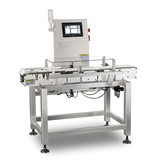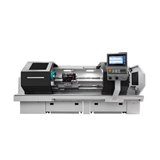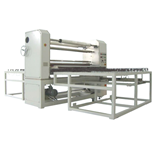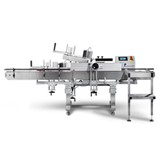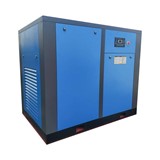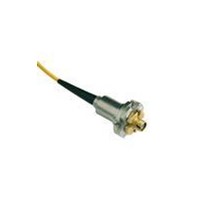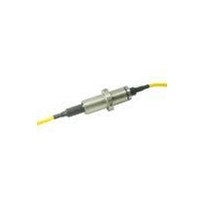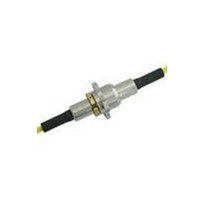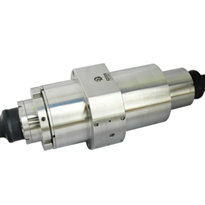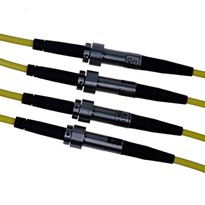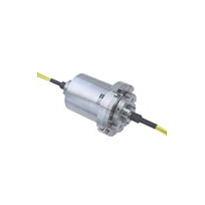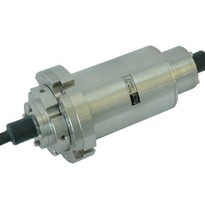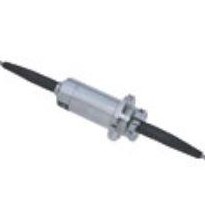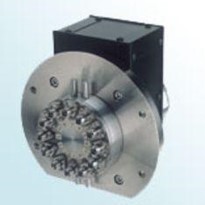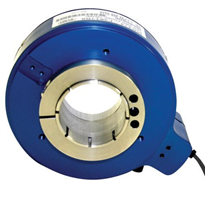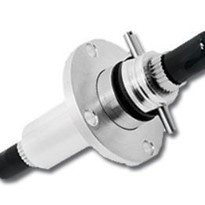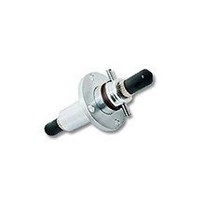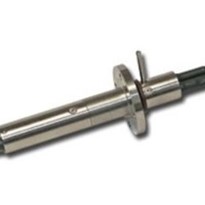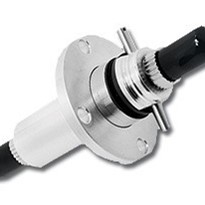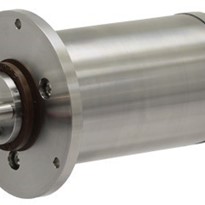It allows uninterrupted transmission of an optical signal while rotating along the fibre axis. The FORJ is widely used in missile guidance systems, robotic systems, remotely operated vehicles (ROVs), oil drilling systems, sensing systems, medical devices (OCTs), broadcasting and many other field applications where a twist-free fibre cable is essential.
Technology
A quick patent search produces hundreds of inventions around two-channel and multiple-channel fiberoptic rotary joints. Commercially, however, only a limited number of design principals are implemented. At Princetel, we use our proprietary technologies to facilitate both the dual-port (2-channel) and multiport (multi-channel) FORJs. We offer our customers an exciting new alternative with better performance.
Key parameters
A FORJ's only function is to provide connection between two or multiple fibre cables while allowing free rotation between them. Therefore, it is critically important to ensure that the device has low insertion loss, small insertion loss variation (wow), and high return loss (a measure that characterises the amount of reflection a FORJ generates).
Insertion Loss:
3-dB insertion loss is equivalent to 50% transmission. Most commonly used media converters offer overall optical budget greater than 15 dB. However, there can be a number of fiber connections and components between the converter pair, each gives rise to loses. Therefore, it is essential to maintain a relatively low insertion loss through fibre optic rotary joints. Typical insertion loss of Princetel's single-channel FORJ is 0.5 dB and 3 dB for dual and multiple channels.
Insertion Loss Variation (wow):
It is natural to experience some loss variation as the FORJ rotates due to changing coupling conditions. However, if this variation reaches a certain level, signal-to-noise ratio degrades. If wow is critical in your application, select Princetel's single-channel FORJs which feature less than +/-0.25 dB wow.
A rotary joint's wow is also an important indicator on the device's overall condition. It should always be the first thing to check when things go wrong. For example, if a FORJ suddenly shows significantly higher wow, it is almost certain that the FORJ is faulty. Otherwise, the most likely cause is somewhere else, such as faulty connectors or broken fibres.
Return Loss:
All laser sources, especially DFB (distributed feedback) lasers, are sensitive to optical reflection, which causes spectral fluctuation and subsequently, power jitter. Return loss is a measure of the amount of reflection accruing in an optical system. A -45 dB reflection is equivalent to 45 dB return loss. While return loss as high as 60 dB can be achieved with singlemode fibers even for multi-channel FORJs, the typical figure for multimode is around 40 dB.
40 dB return loss is a common requirement in the industry for singlemode passive components such as a FORJ to ensure normal system operation. All Princetel's FORJs satisfy this requirement. 50 dB or even 60 dB figures can be provided as standard options.
Single channel vs. multiple channels
The single channel FORJ has a very simple mechanical structure which allows the device to be compact, high speed, highly reliable, and long lasting. A single singlemode fibre can carry tens if not hundreds channels of electronic data channels. The cost of an n-channel multiplexer and a single channel FORJ combined can be much lower than that of an n-channel FORJ with no multiplexer.
For those who definitely need two-channel FORJs Princetel offers a coaxial design to maintain a compact package and good performance at a reasonable cost and there is no "dead spot" at any rotation angle.
A much more complex mechanical structure is necessary to facilitate the multi-pass (multi-channel) FORJs. The device also requires careful optical alignment to maintain good performance in all three key areas mentioned above.
Poor alignment or inadequate optical design will not only compromise the key optical performance, but also create potential new problems such as high wavelength dependent loss, high PDL (polarisation dependent loss), high PMD (polarisation mode dispersion), and high crosstalk (see further discussion below). Princetel’s proprietary multi-channel design allows channel count as high as 12 as standard and dozens as custom solutions.
Wavelength dependent loss is a measure of uniformity of the insertion loss vs. wavelength since multiple wavelengths, such as 850, 1310, and 1550 nm, are common. If the optical system contains a highly dispersive element, wavelength dependent loss can be an issue. 0.5-1.0 dB insertion loss difference between 1310 nm and 1550 nm is generally acceptable.
Similar to wavelength dependent loss, polarisation dependent loss is a measure of uniformity of insertion loss vs. polarisation. The input polarisation randomly changes in a typical fibre optic system. Less than 0.1 dB is considered the industry standard for passive components. An optical component with a non-normal incidence angle is known to create PDL at elevated level.
Polarisation mode dispersion is a measure of pulse stretching due to the travel speed difference of the two orthogonal polarisation modes. Any natural or induced birefringence will cause PMD in the system. 0.1 pico-second (ps) or less is a common requirement for passive components. PMD is usually not a consideration unless the signal bandwidth is gigabit or higher.
Crosstalk measures the amount of signal crossing between adjacent channels. The higher the figure, the lower the crossing. For example, 60 dB crosstalk represents crossing of 1 part per million to adjacent channels. Crosstalk requirement differs from system to system. In general, the higher the system optical budget, the higher the crosstalk figure should be. All Princetel's dual and multiple channel FORJs offer greater than 60 dB crosstalk as typical figure.
Singlemode vs. multimode
The much smaller fibre core (9 microns) in singlemode fibers maintains optical beams in their purest form, a mathematically perfect Gaussian profile. Singlemode fibre's bandwidth capacity is far larger than that of multimode fibres. Its bandwidth is also much less dependent on fiber length and can be expanded easily. Overall, multimode systems still offer the cost advantage over singlemode. However, the gap is narrowing as the popularity of singlemode grows.
Size
The history of passive fibre optic components has proved that size does matter. In fact, size reduction has long been one of the driving forces for innovation. Most FORJs are used with electrical slip rings, RF rotary joints, or fluid rotary union. Occupying the center of the system, FORJ's diameter often drives the overall size of the system. Smaller FORJ usually means lower cost for the entire system.
Pigtails vs. receptacles
A FORJ can be packaged with either pigtails or receptacles on both ends of the device. The pigtailed version typically has more repeatable optical performance since it eliminates the uncertainty in connector joints. Faulty connectors in pigtailed version can be easily re-conditioned or re-terminated while similar defect in receptacle version might result in irreversible damage.
We recommend the pigtailed version to most of our customer for those reasons. However, for applications that do not allow fixed pigtails on the device, we do offer both FC and ST format receptacles in our R series FORJs. We can even mix and match pigtail and receptacle in one device to create custom configurations.
Center bore
Almost all standard FORJs available on the market do not have centre bores. Those that do are not truly passive FORJs. In other words, the output fiber is replaced with photo detector. It is much more challenging to design a passive FORJ with centre bore. Princetel has a few different designs of passive FORJs with centre bores targeting a variety of potential applications. Please provide the following key parameters in your inquiry.
- Number of fibres
- Fibre type
- Bore diameter
- Limited rotation or infinite rotation in each run
- Overall max dimension
Fluid filling
FORJs have been used widely in underwater applications where water tightness and pressure equalisation are important. Fluid filling not only makes pressure compensation possible but also provides lubrication and index matching. Princetel offers both fluid filled and fluid free models to satisfy different needs.
Custom designs
All our FORJ products can be custom made to meet specific requirements. Call us if you do not see an immediate solution on our website. You may be surprised on how much we can make your job easier.


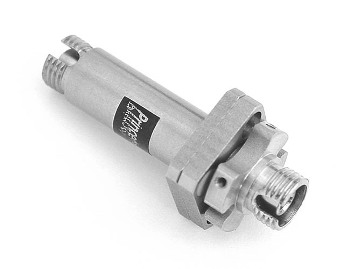


-160x160-state_article-rel-cat.png)
-160x160-state_article-rel-cat.png)


